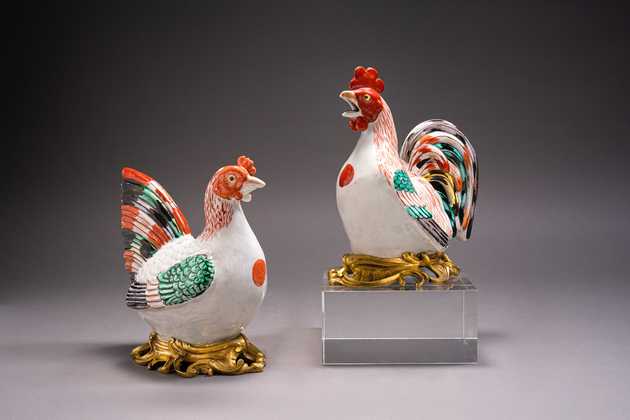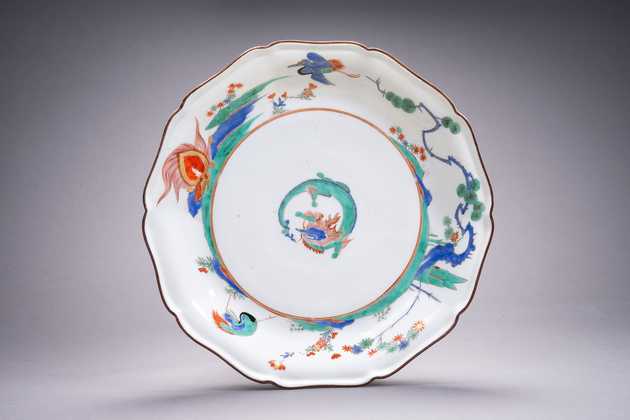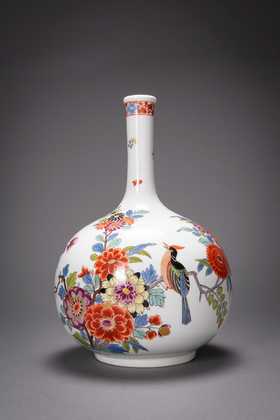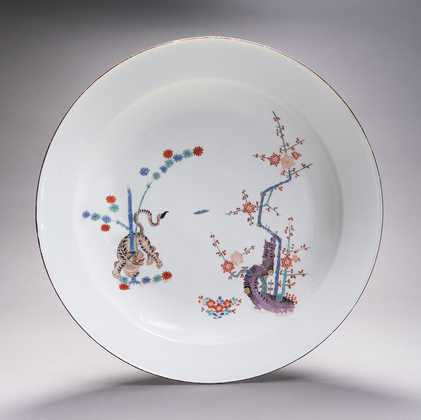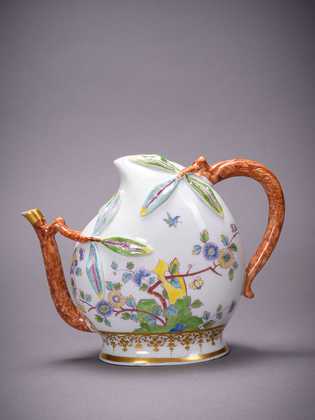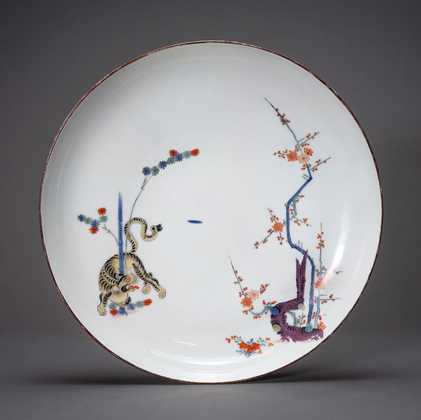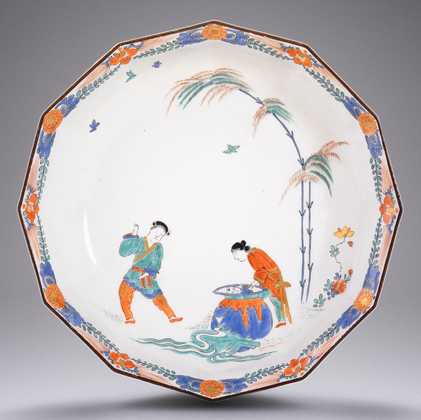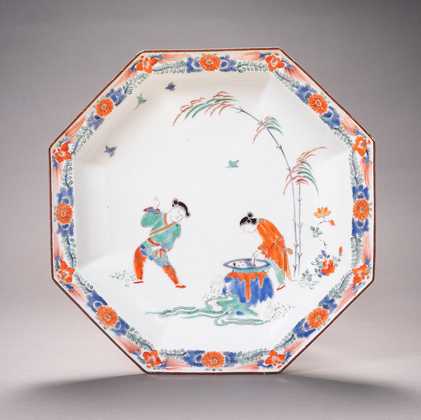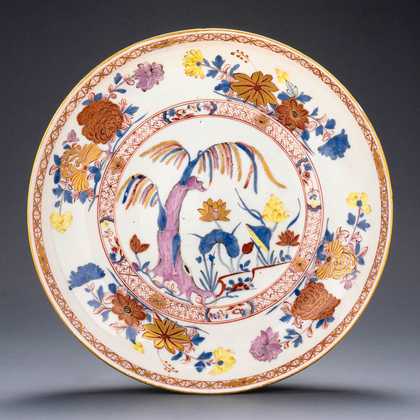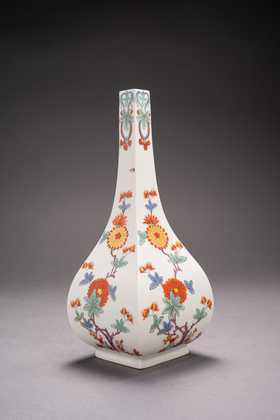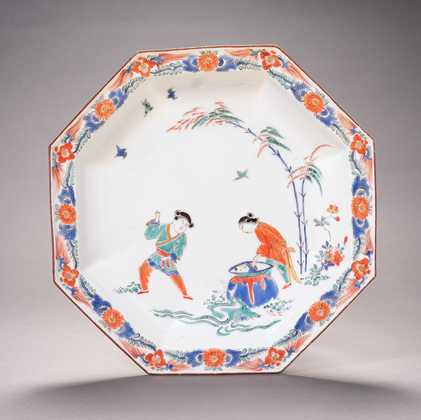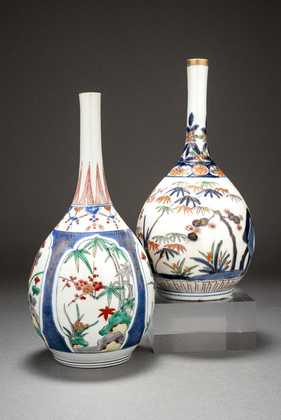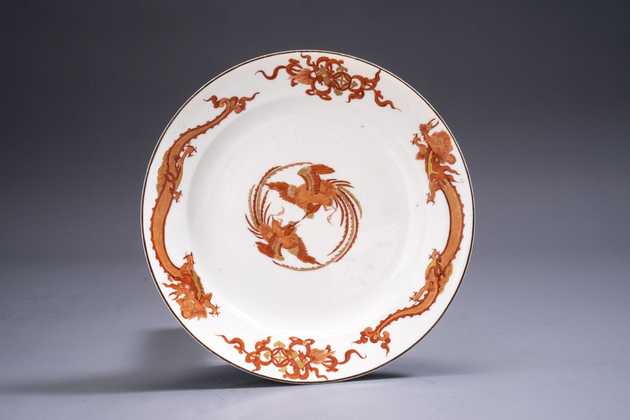






Three sake bottles in Japanese Kakiemon style
Square Japanese Kakiemon sake bottle: Arita 1674-1690, 21.5 cm high, red mark "R.:B: 1750"
Octagonal Meissen sake bottle: Meissen 1729/31, 22.8 cm high, enamel blue overglaze swords mark
Square Meissen sake bottle: Meissen 1729/31, 21.5 cm high; enamel blue overglaze swords mark
Provenance: (the two Meissen) Count Hoym and Rudolphe Lemaire; (the two square sake bottles) Coll. Eugen Gutmann; (the octagonal one) exhibition catalogue Lübeck no. 71 = published by Jedding no. 107
Description
The Japanese sake bottles were vessels for rice wine. Böttger had already imitating their clear and balanced form in stoneware (Pietsch: Höroldt 1996 p. 31). The model is available in quadrangular, hexagonal and octagonal shapes or round and with a long, slender, angular neck. Pietsch writes (ibid): "The later sake bottles with the style painted in Kakiemon are of great perfection" (Pietsch ibid.). Examples can be seen on our square Meissen sake bottles (fig. above right), they are absolutely faithful copies of the Japanese model (fig. above left).
The Meissen copies - which show enamel swords - go back to the Parisian porcelain dealer Rudolphe Lemaire - a pronounced connoisseur of the Parisian market and the great demand of the court and the nobility for luxury goods, especially the exorbitantly expensive Kakiemon porcelains. Lemaire's idea was to select suitable models from the extensive collections of Augustus the Strong in the Dutch Palace, have them copied in Meissen at a reasonable price and then offer them as Japanese originals on the Paris market at a considerably higher price. The newly appointed director of the manufactory, Count Hoym, who he was familiar with from their times together in Paris, helped him to set up this business model.
Our Meissen sake bottles (Fig. top centre and right) were both pieces in this so-called Hoym/Lemaire affaire, which began in November 1729 and came to an abrupt end in March 1731. The swords marks in overglaze blue indicate that they were sold by Lemaire on the Paris market during this period. Otherwise they would have been confiscated at the beginning of April and transferred to the Japanese Palace along with all the remaining stocks stored in Count Hoym's house. Our sake bottles belong to the oldest series of Meissen examples and predate those that were later delivered to the Japanese Palace.
Picture-gallery

















